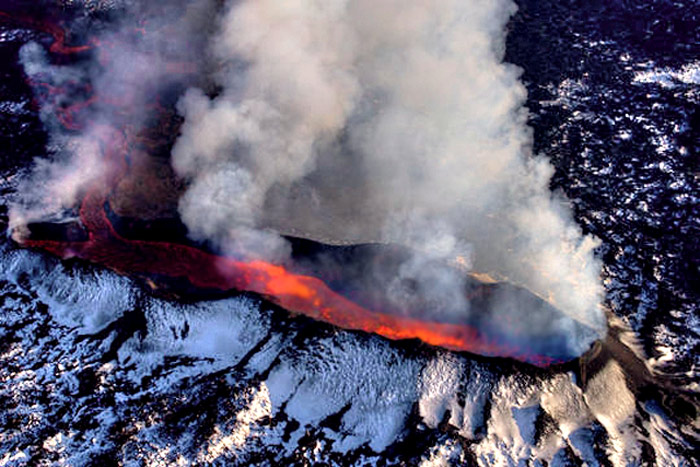The Fire Dies Down
Feb 25, 2015
 Icelandic authorities reported this week that the five-month-old volcanic eruption known as Holuhraun shows numerous signs of winding down, at least for the moment. They believe that volcanism in that part of the country is entering a new phase
Icelandic authorities reported this week that the five-month-old volcanic eruption known as Holuhraun shows numerous signs of winding down, at least for the moment. They believe that volcanism in that part of the country is entering a new phase
The lava flow has decreased dramatically. After spilling wildly for months over an area the size of a large city, the lava now is mostly pooling in a single crater before it trickles out across the landscape.
The population of Iceland is no longer suffering from the volcano's poisonous gases, though gas concentrations in the immediate vicinity of the eruption are still at deadly levels. It has been two weeks since any populated area experienced serious atmospheric pollution.
Earthquake activity associated with the eruption is way down, though officials still describe it as very high. Yesterday, about 25 earthquakes shook the region, all smaller than 3.0. Until recently, the daily count was usually 80 or more, some of them above magnitude 5.0.
Holuhraun has been fed with magma from a chamber underneath Iceland's largest volcano, the glacier-covered Bardarbunga. As the magma chamber emptied out, Bardarbunga mountain began collapsing in on itself, subsiding more than 100 meters since measurements began in September. The rate of subsidence has dramatically slowed in recent weeks; yesterday, it was just 2 cm.
Clearly, Holuhraun is running on fumes now and is likely to cease significant eruption in the near future. But volcanologist Armann Hoskuldsson cautions that the overall volcanic episode may not be anywhere near complete and in fact may be just now entering a much more active phase.
Tectonically, the Holuhraun eruption involves rifting; the lava is actually creating new land in between two diverging tectonic plates. Hoskuldsson notes that rifting episodes last much longer than five months–usually at least ten years–and they typically involve multiple eruptions, often much more ferocious than Holuhraun.